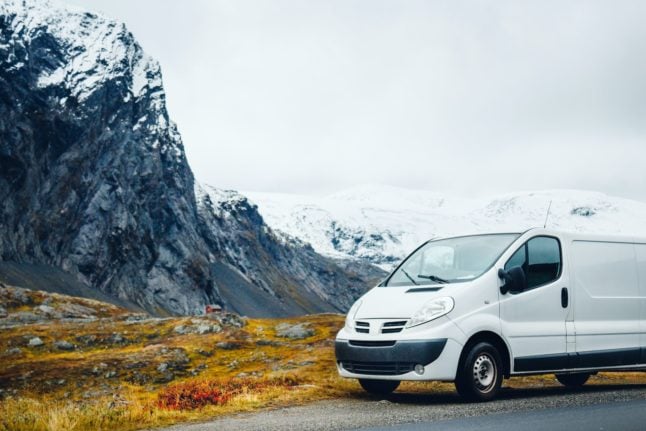Check the vehicle’s history
You can learn a lot about the car you are considering buying by looking into its history. On the Norwegian Public Roads Administration’s website, you can check the vehicle’s previous owners, registered mileage, EU checks and technical data about the car.
This service also gives you a fairly solid idea of whether the seller of the car is the actual owner. In Norway, only the registered owner of a vehicle can sell a car unless they have given power of attorney to somebody else to do so.
Read over the service booklet
The car’s service booklet can tell you a lot about the vehicle. For example, the service booklet will tell you how often the car has been serviced and what mileage has been recorded at each interval. You should steer clear of vehicles that don’t come with a complete service history.
Service history booklets also give you an indication of how well a car has been maintained. It can also give you an insight into potential problems later on. For example, many vehicle models have problem parts that need maintenance or replacement after a certain amount of mileage. If these minor issues that need rectifying haven’t been kept up with, it can spell bigger trouble down the line.
Additionally, if the car you are looking at is known to have any problem parts, knowing when it was last replaced will give you an indication of when you can expect another bill to resolve the issue.
You can pay some centres and organisations to carry out an inspection of the car for you.
Make sure the car doesn’t have any liens against it
When buying a used car, it is essential to check whether the car has been used as security or collateral and could be subject to a lien.
When buying a used car from a dealership, this usually won’t be a problem.
But if you buy a car with loans or debts taken out against it and the debtor defaults, the creditor can legally take the car- even after you have bought it. You can check here to see if a vehicle has a lien against it.
Are you buying from a dealership or private seller?
Cars bought from a dealership are more likely to have been thoroughly inspected by the company’s mechanical department. In contrast, when you buy privately, you are more likely to buy “as is”. However, you can pay some centres and organisations to inspect the car for you.
If you purchase a car from a dealership, you will be more likely to have a warranty covering your back if things go wrong.
When buying from a private individual from Finn.no, you can take out a warranty on cars under 12 years. This warranty only lasts between six and twelve months, though.
Buying privately also allows more room for haggling and negotiation and will, in most cases, be cheaper than buying from a dealership.
Re-register and insure the car
When a vehicle in Norway changes owners, the change will need to be reported to the Norwegian Public Roads Administration. This will need to be done within three days of the vehicle changing hands.
The previous and new owners will need to sign the notification of sale. The previous owner is responsible for reporting the sale.
You will also need to re-register the vehicle. While going through the registration process, the car must not leave the county. To re-register the vehicle, you will need to pay a fee. After that, you will need to take out motor vehicle liability insurance.
It’s also worth noting that you will need an online ID and personal identification number to buy a vehicle in Norway.
If something goes wrong
When buying a car from an individual, you have two years where you can claim for defects or faults. You have a five-year complaint period when purchasing a vehicle from a dealership.
For this reason, using a contract is essential when buying a used car, as you can specify what was expected of the vehicle when you purchased it.
Buyers can complain about faults and defects with the car that were present when the vehicle changed hands that the seller did not disclose. However, parts and faults that occur later on can’t be the subject of a complaint. Furthermore, the car’s age is also important as older cars can be expected to have more go wrong with them over time.
Even when sold “as is”, sellers will still have an obligation to provide the buyer information regarding major faults and issues with the car.



 Please whitelist us to continue reading.
Please whitelist us to continue reading.
Member comments